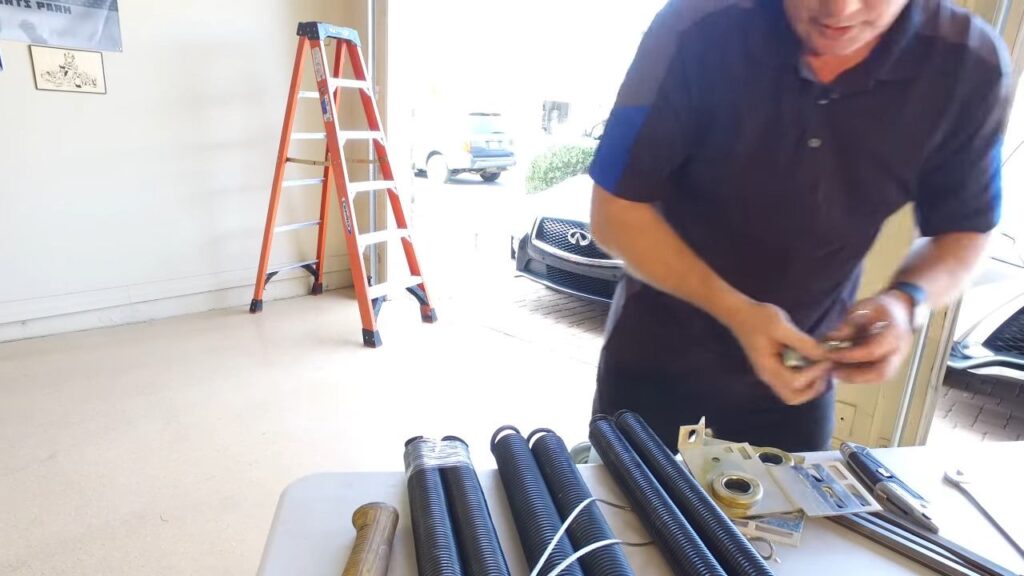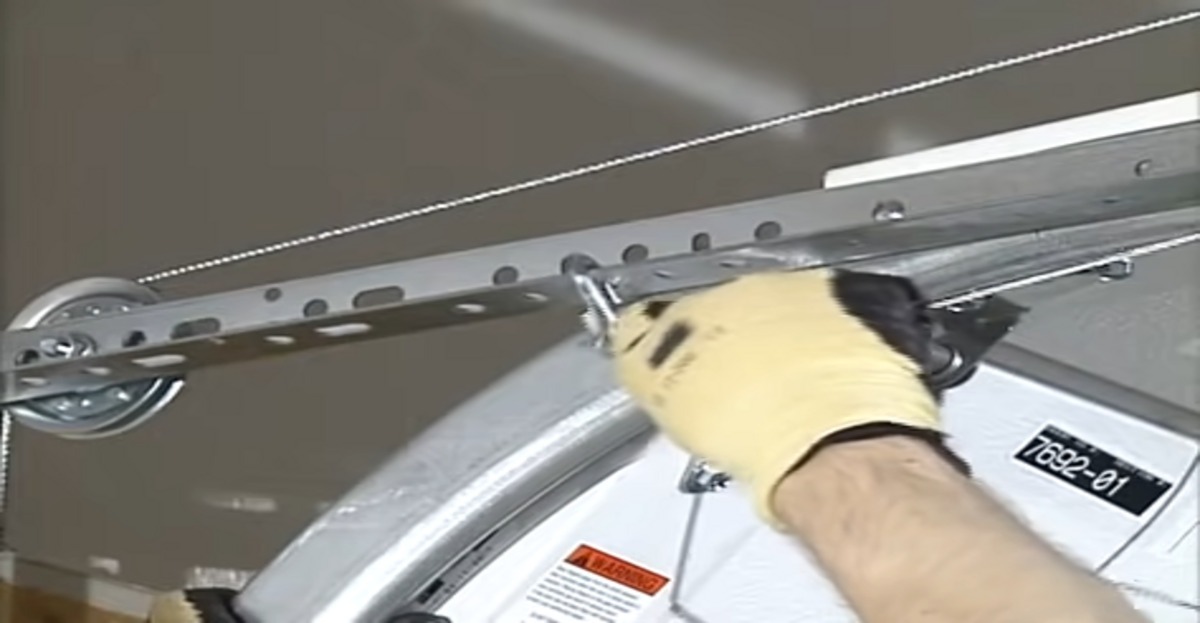Affiliate Disclosure: We may earn money or products from the companies mentioned in this post.
Garage door springs are pretty important, as they serve as levers or pulleys to pull the weight of your garage door up or door. Most garage door springs are located at the top sides of a garage door.
Since a garage door spring evenly balances the weight of your garage door, you might wonder how they work when opening or closing it. We will discuss how a garage door extension spring works and a lot more below.
A garage door extension spring is an older garage door technology. It usually uses a 2 spring system located at the sides of the garage door. The extension spring works by stretching and contracting the tightly wound wire coil. When you close your garage door, the extension springs are usually stretched to twice the coil length. The garage door stays open without support because the springs’ tension counterbalances the door’s weight.
Although you might not like the initial noise when you begin to use an extension spring newly, it stretches and contracts with ease, thereby reducing the noise as time goes on.
How to Determine the Extension Spring for my Garage Door?
When getting an extension spring for your garage door, there are several things you must consider. Here are some of the things you should consider.
1. The Weight of the Garage Door
The weight of your garage door is something you should consider when getting an extension spring. This is because different types of extension springs differ in how much they can accommodate.
Checking the weight of your garage door is pretty easy. You can slide or put an analog scale under the garage door’s weight if you have broken extension springs. You should be able to ascertain the garage door’s weight when you do this.
On the other hand, if you only have one broken spring in your garage door, remove the broken spring and fix your scale under the garage door where the spring is broken. Multiply the result by 2. Once you do, the result is the weight of your extension spring.
2. The Height of the Garage Door
Another important thing you should consider before you get an extension spring is the height of your garage door. While most garage doors have been standardized in length, you must know that there are still different types of extension springs for different garage doors in the market today.
You must take your time to measure the height of your garage door as it determines the type of spring you should get. You will need extension springs stretching twice their length whenever you use garage doors above 14 feet high.
3. The Type of Extension Spring
Although all extension springs perform the same functions, you should know that their capability has different limits. Based is a limit to how much an extension spring can stretch and contract based on the type of extension spring you use.
Different color codes for most extension springs determine how much weight your extension spring can accommodate. Check the color code before selecting your garage door extension spring.
How Do I Know if my Extension Spring Is Faulty?

Knowing if your extension spring is faulty is pretty easy to confirm. Here are pointers to know if your extension spring is faulty.
1. Check for Gaps between the Springs
One of the first indicators of a faulty extension spring is gaps between the springs. You must take your time to check for any gaps within the springs, as gaps indicate that the springs are already worn out.
Once you notice any gaps between the springs, you must take your time to remove and replace them springs. A worn-out spring cannot be repaired; it can only be replaced. Please get a new spring and replace it.
2. Check if You Can Open the Door Manually
This is another thing you must do if you want to confirm if your extension springs are working fine. You must take your time to switch off your automatic controllers and check if you can easily open your spring door manually.
If you have difficulties opening the door without remote controls, there might be one or two problems with your garage extension springs. You might have to look further at your extension spring and check for rust.
3. Check for unusual Noise
While loud noise is normal when using a new extension spring, you must know that the noise should be reduced to the barest minimum as you frequently use the spring. Once you hear an unusual noise when you use the extension spring, it might be more than just a lubrication problem. You must take your time to check your extension spring to confirm if they work well.
If the loud noise is accompanied by difficulties in the door going up, it is an extension spring problem.
4. Uneven alignment
All extension springs should evenly distribute the garage door’s weight across the 2 sides. Once you notice a problem in the alignment or the alignment looks uneven, you should know there is a problem with your extension springs.
An uneven alignment indicates that one of your extension springs might be broken. Take your time to check and replace the spring if anything is broken.
How Do I Replace my Garage door Extension Springs?
Replacing your garage door extension springs is pretty easy, as long as all the safety measures are observed. However, before you replace the extension spring, you will need certain tools or equipment, such as step ladders, work gloves, garage door spray lubricant, safety goggles, and more.
Once you have the necessary tools, follow the steps below to replace your garage door extension springs.
1. Buy your New Springs and Prepare your Garage Door
This is the first thing you must do if you want to replace your garage door extension springs. You must take your time to buy a new extension spring for your garage door. If you dont want to use an extension spring, you can buy a torsion spring.
Once you have gotten the new spring, you should prepare your garage door. Simply open the garage door fully and use a ladder to support the door. If you dont want to use a ladder, you can easily use a C-clamp on each side of the door tracks. This will prevent the door from accidentally closing while replacing the springs.
2. Detach the Extension Spring and Disconnect the Cables
Once you have secured the garage door, you can detach the extension springs. Detaching the extension springs is pretty easy. Simply unscrew or unbolt the spring that holds themes to the back of the door tracks.
Once you have detached the springs, detach the necessary cables. These cables, which range from the lift and safety cables, should be detached. Disconnect the lift cable from the bracket, disconnect the movable pulley, and unthread or lose the cable from the spring.
Also, remove the safety cable that runs through the spring. You can safely remove the spring once you do this.
3. Attach Safety and Lift Cables to New Springs
You can go ahead and thread the new cable to the new spring. Once you thread them, attach the cable to the track bracket.
Once you have done the above, attach or join one end of the spring to the connection point on the door tracks. Attach the other end to the pulley. Ensure the cable is properly treaded from the lower corner of the door, through the movable pulley, to the back of the bracket on the door track.
Stretch the string a little by applying a bit of force when making the final attachment of the cable to the track bracket.
4. Lubricate and Test the Springs
Once you are done following the steps above, the last thing to do is lubricate the spring and test if it is working perfectly. Simply apply the spray lubricants before checking if the spring is working perfectly.
You can test the spring once you have applied the lubricant. The same process applies to changing the extension spring on the other side of the garage door.
Conclusion
The extension spring works in a very simple way. By counterbalancing the weight of your garage door, it pulls up or brings down your garage door, depending on the commands you give. The working process of the extension springs has been discussed in this article.
We have also discussed other things like knowing if your extension spring is faulty and how to replace a bad extension spring. Simply ready, though, to get all you need.


